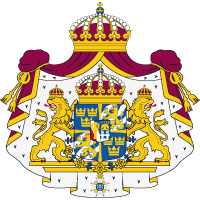Gustav III's Pavilion
It was from here that King Gustav III set off for the fateful masquerade ball at the Royal Swedish Opera in March 1792. His pavilion in Stockholm's Haga Park is decorated in Pompeian style. It is a highlight of Swedish art history, and is one of the leading works from the late 18th century.
Gustav III´s Pavilion at Haga Park is one of the highlights of Swedish art history and is one of the finest examples of the European Neo-Classicism of the late 1700s in Northern Europe.
The pavilion was built by architect Olof Tempelman – with detailed instructions from the highly-engaged King Gustav III. Yet another great artist was commissioned for the interiors – Louis Masreliez – who became a trendsetter in the interior design of the period.
The pavilion was just one of many great plans and visions that Gustav III had for Haga Park, many of which made it no further than the drawing board.
Gustav III made use of the pavilion for a few years before his assassination. It was from here that Gustav III left for the fateful masquerade ball at the Opera in March 1792.
Photo: Raphael Stecksén/Royalpalaces.se









